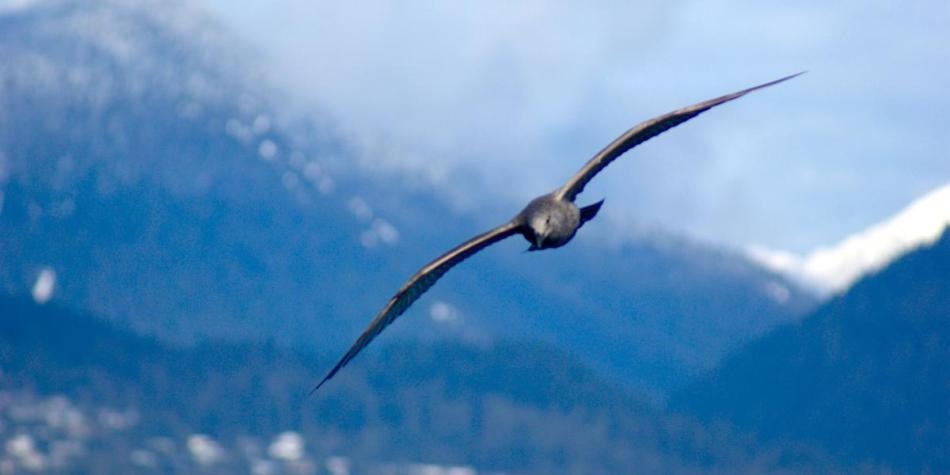Jan 3 2019
Flexing a single elbow joint allows gulls to adjust their wing shape to windy conditions, according to new University of British Columbia (UBC) research—a comparatively simple mechanism that could inspire enhanced aircraft design.
 A young glaucous-winged gull glides over Canada Place in Vancouver, BC, Canada. (Credit: University of British Columbia)
A young glaucous-winged gull glides over Canada Place in Vancouver, BC, Canada. (Credit: University of British Columbia)
While we know birds frequently alter their wing shape, this is the first empirical evidence demonstrating how that wing morphing affects avian stability. And in this case, the gull’s wing design points to a novel, and fairly simple, avian-inspired joint that may enable aircraft to adjust dynamically to challenging conditions.
Douglas Altshuler, zoologist and study’ senior author, UBC.
The research paper was published recently in the Journal of the Royal Society Interface.
As wing speeds and maximum squalls increase, gulls give up stability for maneuverability. By changing the angle of their elbow joint, they shift from extended wing configurations to a flexed configuration, pulling the tips of their wings in and back. The flexed shape provides them with better control.
To establish the stability of various wing shapes, Altshuler and scientist Christina Harvey prepared gull wings over the anatomical elbow range and measured their effectiveness in a wind tunnel. They also studied gulls in the wild.
“The Wright brothers weren’t the first to design an aircraft that was able to fly, but they were the first to successfully control and stabilize a powered aircraft inflight,” says Harvey, currently with the University of Michigan.
“Likewise, it’s not enough for birds to simply produce sufficient lift and thrust. They must also control and stabilize their flight paths to be able to successfully forage and migrate in their natural habitat.”
To obtain a complete picture of how birds maintain their stability while gliding the scientists want to examine a wider range of wind perturbations—gulls frequently come across unsteady, large-scale turbulence while flying in the wake of buildings or convective air flows over open water. Atmospheric turbulence in these circumstances is probably greater than the wind tunnel turbulence the scientists used in the research.